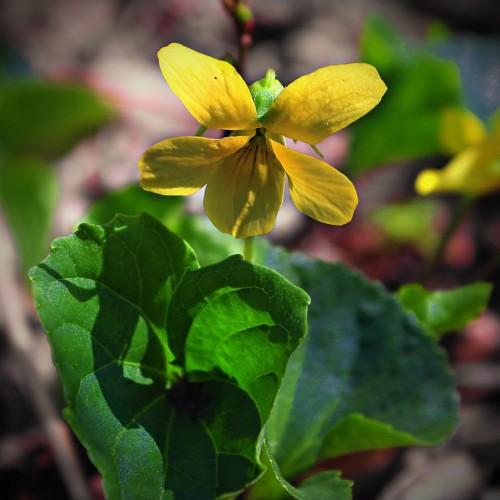
eastern round-leaved violet
Viola rotundifolia
Cycle:
Herbaceous Perennial
Watering:
Frequent
Hardiness Zone:
3 - 7
Flowers:
Flowers
Sun:
Full Shade
Leaf:
Yes
Growth Rate:
Low
Maintenance:
Low
Drought Tolerant:
Yes
Salt Tolerant:
Yes
Thorny:
Yes
Invasive:
Yes
Care Level:
Medium
watering
Eastern round-leaved violet prefers to be moderately moist, so it should be watered when the soil is dry about 1” inch below the surface. Water the plant deeply and thoroughly, then allow the soil to dry out almost completely before watering again. This species of violet does not like soggy soil and can suffer damage from excessive moisture. Allow the plant to dry out slightly between waterings. In general, water your Eastern round-leaved violets once every 2-4 weeks, depending on the temperature, providing just enough to ensure that the soil stays moist without becoming soggy. Make sure the plant is never sitting in water.
sunlight
Eastern round-leaved violet is native to the Eastern United States and is ideal for woodland gardens and shady rock gardens. This species of violet thrives in semi-shade to shade, and needs 4 to 5 hours of direct sunlight per day. However, it prefers filtered sunlight or partial shade - exposure to too much direct sun during the hottest part of the day (between 10 am to 4 pm) can cause leaf scorch in this species. The best time to provide sunlight is in the early morning (between 9 am to 11 am), and late afternoon (4 pm to 6 pm). During overcast days, Eastern round-leaved violet will be able to tolerate longer periods of direct sunlight. This species of violet performs best in well-drained and slightly acidic soil that is kept slightly moist.
pruning
Eastern round-leaved violet (Viola rotundifolia) typically does not require pruning. However, if you are looking to control its size or shape, the best time for light pruning is during the spring when new growth begins to appear. Prune back stems to reduce the spreading or sprawling habit of the plant. When possible, prune straight above a leaf node while avoiding large pruning cuts. It is generally recommended to avoid cutting back all the flowering stems at once, as Eastern round-leaved violets may not flower the next year if all the stems are removed. Although the occasional light pruning should not cause any major issues, too much pruning can cause the plant to become unhealthy over time, and may cause it to stop flowering.
